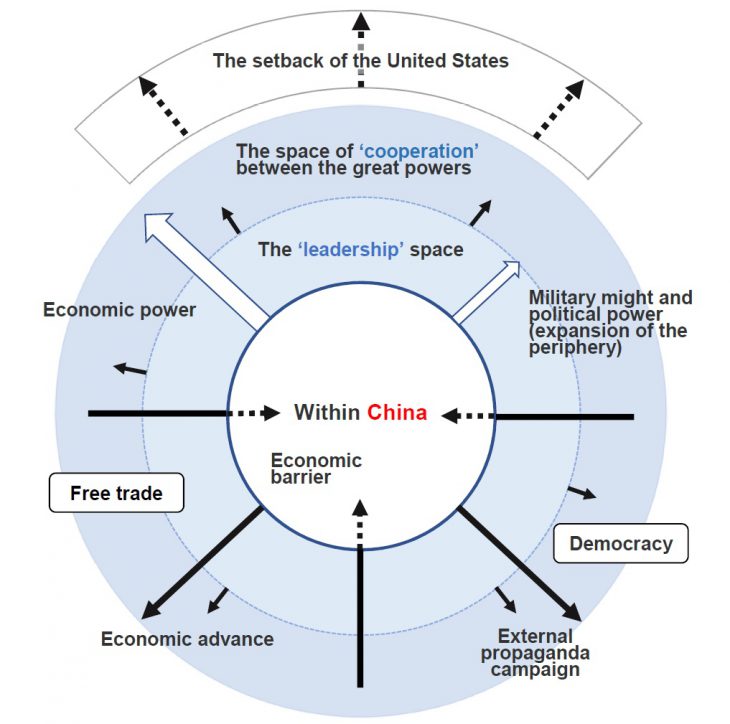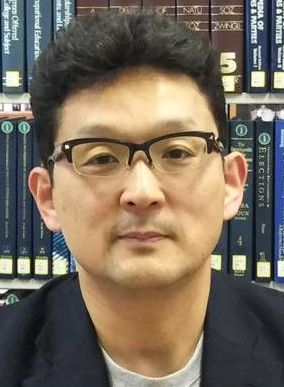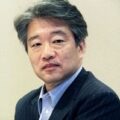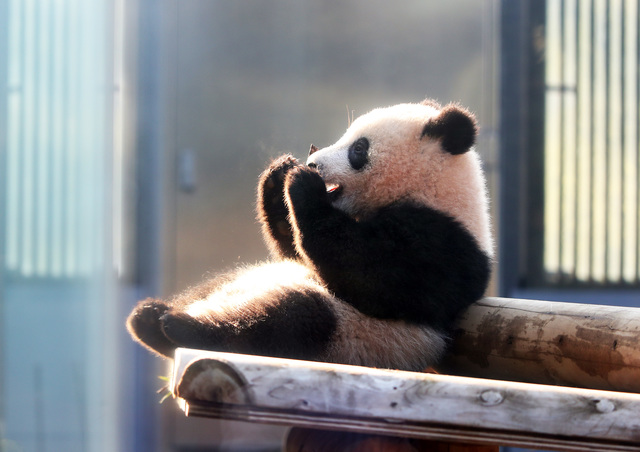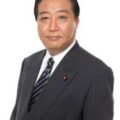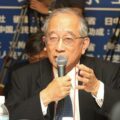The United States and China, Superpowers and Japan: China Emphasizes Its Asymmetrical Worldview
Key Points:
- l It is possible to link the setback of the United States to China’s advance
- l China’s advantage lies in its economic power rather than its military might
- l Japan should take the lead in modifying world standards and norms on a realistic basis

Prof. Kawashima Shin
It is said that the postwar world order is shaky. The order of the liberal camp is based on the liberal economy derived from the Bretton Woods system, the value of liberal democracy, including freedom and democracy, and the security system led by the United States. But the United States, which should have led the order, is waging trade wars and implementing a policy that does not always place importance on allies in terms of security.
Advanced countries excluding the United States are attempting to maintain the existing order by concluding the Trans-Pacific Partnership 11 (TPP 11) involving eleven members and the Japan-EU Economic Partnership Agreement (EPA) and proposing the Free and Open Indo-Pacific Strategy.
On the other hand, China, the world’s second largest economic power, criticized the United States for its security system and proposed a new type of international relations based on economic interest rather than democracy. The One Belt, One Road Initiative, China’s broad-range economic zone project, is a testing ground for these new international relations.
We live in an era when it is no longer possible to say that rich countries are democratic countries. In fact, with democratic countries and regions decreasing all over the world, many people empathize with a Chinese-style order. In addition, with the United States leaning toward protectionism, China advocates a liberal economy, which suggests that the world order is becoming slightly difficult.
What should we think about the current situation, in which policies and foresight among the major powers become entangled?
In the past, the G2 theory involving the United States and China was proposed, and it was considered that it would ultimately be possible to incorporate China into the existing order. This expectation was extinguished in Washington in around 2014, however. China’s aggressive maritime strategy was behind this.
At that time, the Obama administration began to reduce costs to pay for maintaining the existing order, declaring, “The United States is no longer the global police.” It can also be said that the Trump administration followed this policy, although its expression is different. On the other hand, China is making huge investments and is becoming increasingly involved in the global economy and international and regional politics. It is possible to recognize the linkage between the setback of the United States in many parts of the world and China’s advance.
In addition, as shown in the Thucydides Trap, the United States emphasizes how to maintain its advantage over China in terms of hegemony change theory. By paying attention to Chinese President Xi Jinping’s goal of catching up with the United States by 2050, it is conceivable that the United States hopes to maintain its hegemony without fighting against China. Accordingly, the United States, the world’s largest economic power, evaluates the trade balance simply by using advantageous bilateral negotiations and exerts pressure on a country that is the world’s second largest economic power and other countries under it.
In his speech in the fall of 2017, Xi Jinping specified new contradictions for the first time in thirty-six years and declared that China would become a “strong modernized socialist state with Chinese characteristics” by 2050. Regarding foreign policy, Xi Jinping proposed the abovementioned new type of international relations and stated that he would create groups sharing a common destiny by expanding partnerships based on economic relationships. This is different from the existing order.
The remarks made by Xi Jinping are somewhat rational from the Chinese perspective. China’s advantage lies in its being the world’s second largest economic power, rather than in its military might. China intends to advance into the world in terms of the economy first, and then to make political and military moves.
Accordingly, different regions have different views on China’s One Belt, One Road Initiative. Adjacent East Asian regions turn a critical eye toward China, with the economy and military affairs overlapping. More distant regions place importance on China in terms of the economy, whereas Australia and India, which are seeing the arrival of political and military waves, view China with a critical eye.
In addition, we should not overlook the fact that China makes huge investments in technologies related to the Fourth Industrial Revolution, including artificial intelligence (AI), and seeks governance and foreign policies using these technologies. The development of facial recognition systems is also connected with this technological innovation. With a greater emphasis on safety and security than on human rights and privacy, the Chinese version of a social management system is spreading by way of the private sector in many parts of the world as well as throughout China.
On the other hand, China does not deny the existing liberal economic order, including the World Trade Organization (WTO), and also sets a long path toward economic liberalization due to its own national circumstances. This is because China only needs to improve its protectionist system gradually. China uses this time gap.
Viewed from China, if many countries around the world copy its policies, it is, in fact, disadvantageous to China. If many countries around the world adopt free trade policies, this will be desirable for China because it can sell products more easily. For this reason, China expects the external world, especially advanced countries, to be liberal. Interestingly enough, as the Trump administration leans toward protectionism, China is accelerating the process of free trade and lowering its tariffs on foreign products.
This is also true in terms of politics. At present, it is unthinkable that China will adopt a democratic order in the Western sense. But China sees it as desirable in some way for many countries around the world to be democratic. This is because it enables China to create propaganda and infiltrate societies.
While China asks advanced countries, in particular, for freedom and democracy, it sets high barriers against people who try to enter it from abroad. China’s “Going Out” policy (meaning “going out of China” in Chinese) is the symbol of China’s foreign advance. In fact, diverse entities, including the central government, local governments, state-owned enterprises, private companies and individuals, have left China. But this does not mean that others entering China in the same way are welcome.
As noted above, the absence of full reciprocity in the relationships between China and the rest of the world is a fundamental problem.
In spite of this, China’s influence is becoming stronger. There are numerous issues, including loans over repayment capability and the acquisition of security, the connection between the economy and military affairs, and the nontransparent flow of money. Viewed from developing countries, the rapid implementation of projects due to overwhelming funding capability and no need for the cost of democracy is attractive.
For some time during the 1980s to 1990s, democratic countries spread throughout the world, but these countries were able to obtain economic assistance from advanced countries by being committed to democracy. Currently, “democracy without funding capability” and “China with funding capability” are confronting each other. Sensing this sensitively, the United States is weakening its involvement in the world and aiming to defend itself.
From a global perspective, China is pushing forward with cooperative diplomacy between the major powers based on economy and diplomacy for developing countries. On its periphery, China is seeking to form an order linking the economy, politics and military affairs. China, which speaks about its view of new security in Asia and acts as a distributor of benefits and a provider of international public properties, certainly seems to be an order former. China convenes world leaders to show its authority to the entire country and foreign countries. If a problem occurs, China makes other countries change their policies by exerting pressure, including economic power, intelligence capability and military might.
One of the major problems with the Chinese order is that China has still been unable to take the lead in fully forming the standards and norms on rule-making on economic and social activities and governance. The One Belt, One Road Initiative Forum involves an effort to show authority and hold business negotiations, but no standards and norms are formed.
Here is the course that Japan should take. A fundamental assumption should be to simulate diverse future possibilities and options. But if Japan makes it a national policy to maintain the existing world order, it will be desirable to cooperate with advanced countries, including the United States, in modifying the standards and norms on global rules and governance in a direction that is more suitable for the current situation.
Japan should face up to China as powerfully as possible while drawing involvement from the United States in East Asia as well in terms of security, and strive to create standards and norms, including making elaborate rules, in cooperation with the Association of South East Asian Nations (ASEAN) members, Australia, India, South Korea and Taiwan in terms of politics and the economy.
Can the Free and Open Indo-Pacific Strategy do these things that China is not good at doing? It is conceivable that you can open up the possibility of competition and cooperation by simply doing what your competitor is unable to do asymmetrically, instead of confronting hardness with hardness.
Translated by The Japan Journal, Ltd. The article first appeared in the “Keizai kyoshitsu” column of The Nikkei newspaper on 3 August under the title, “Cho-taikoku Beichu to Nihon (III): Chugoku, Hitaisho na sekaikann zenmen ni (The United States and China, Superpowers and Japan (III): China Emphasizes Its Asymmetrical Worldview).” The Nikkei, 3 August 2018. (Courtesy of the author)
Keywords
- setback of the United States
- China’s economic power
- trade wars
- TPP 11
- Free and Open Indo-Pacific Strategy
- Chinese-style order
- One Belt, One Road Initiative
- Xi Jinping
- G2 theory
- Thucydides Trap
- strong modernized socialist state with Chinese characteristics
- China’s “Going Out” policy
